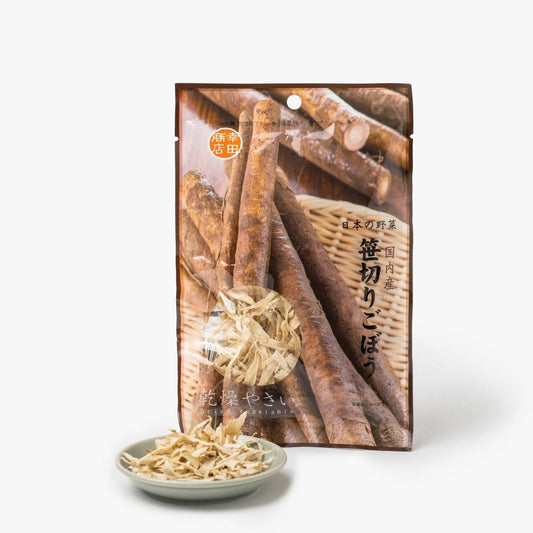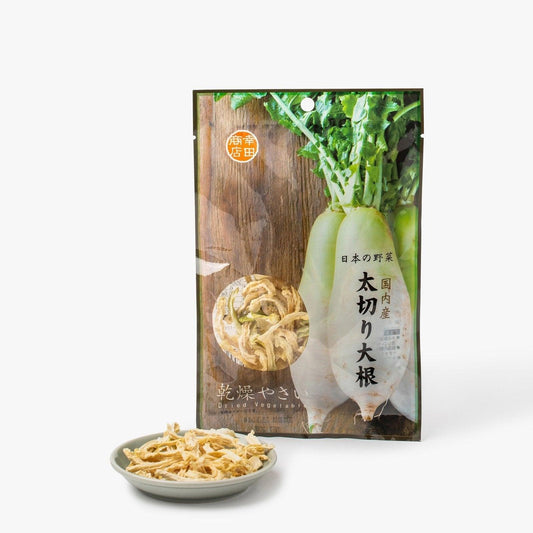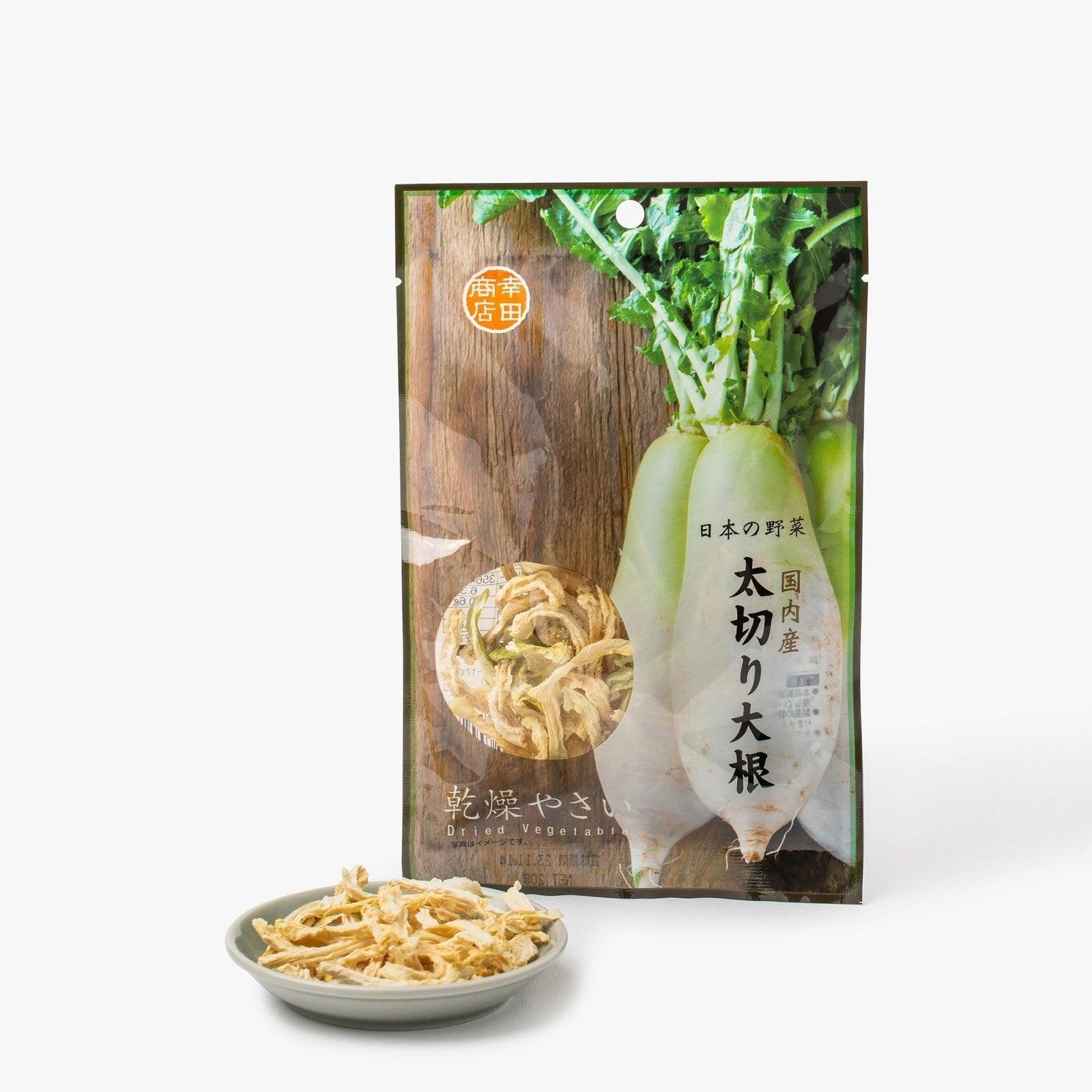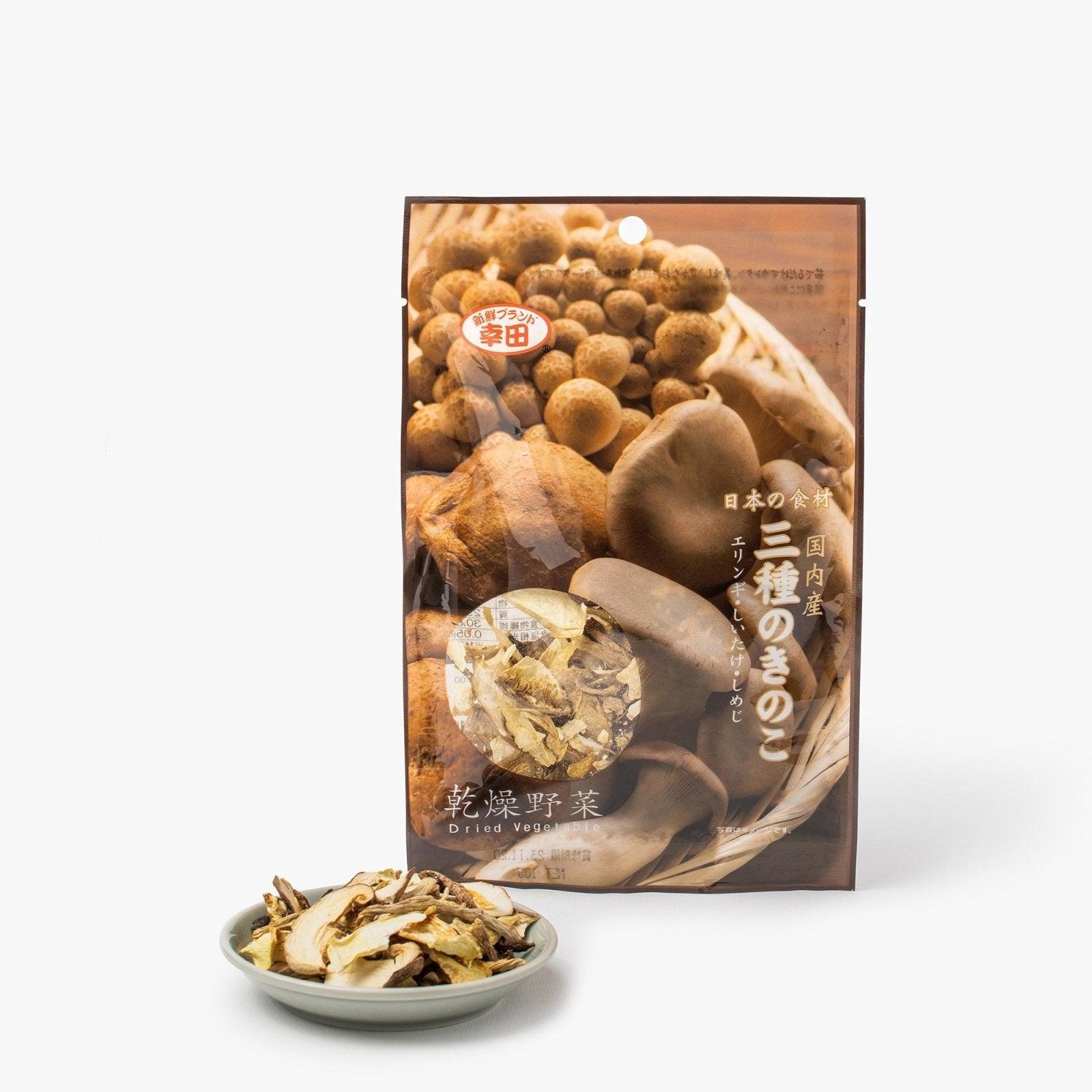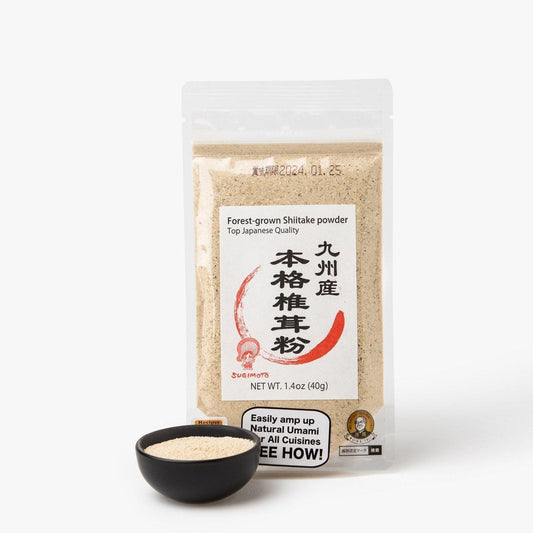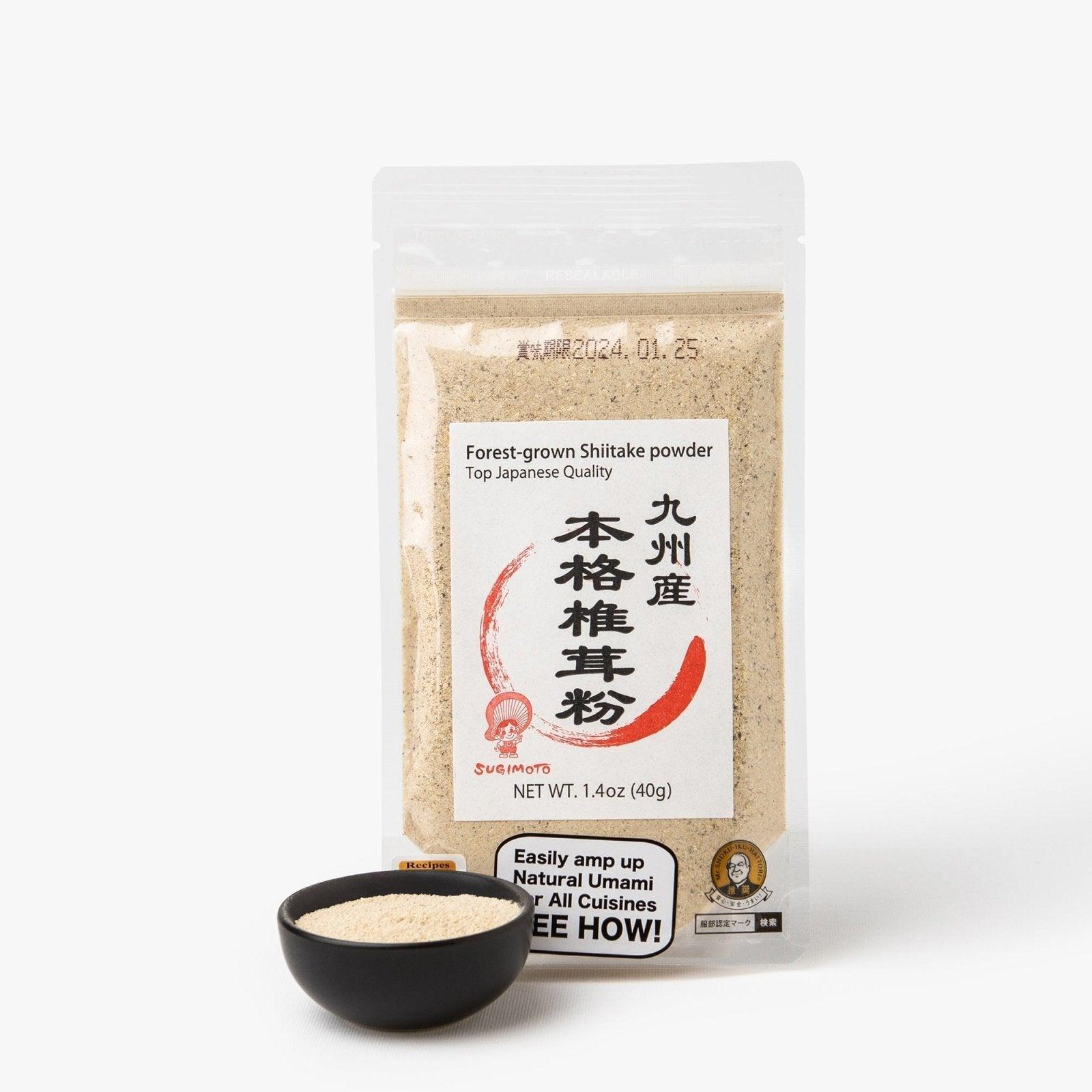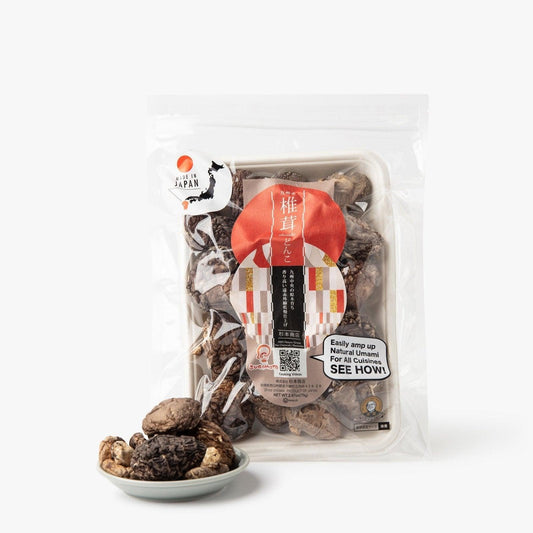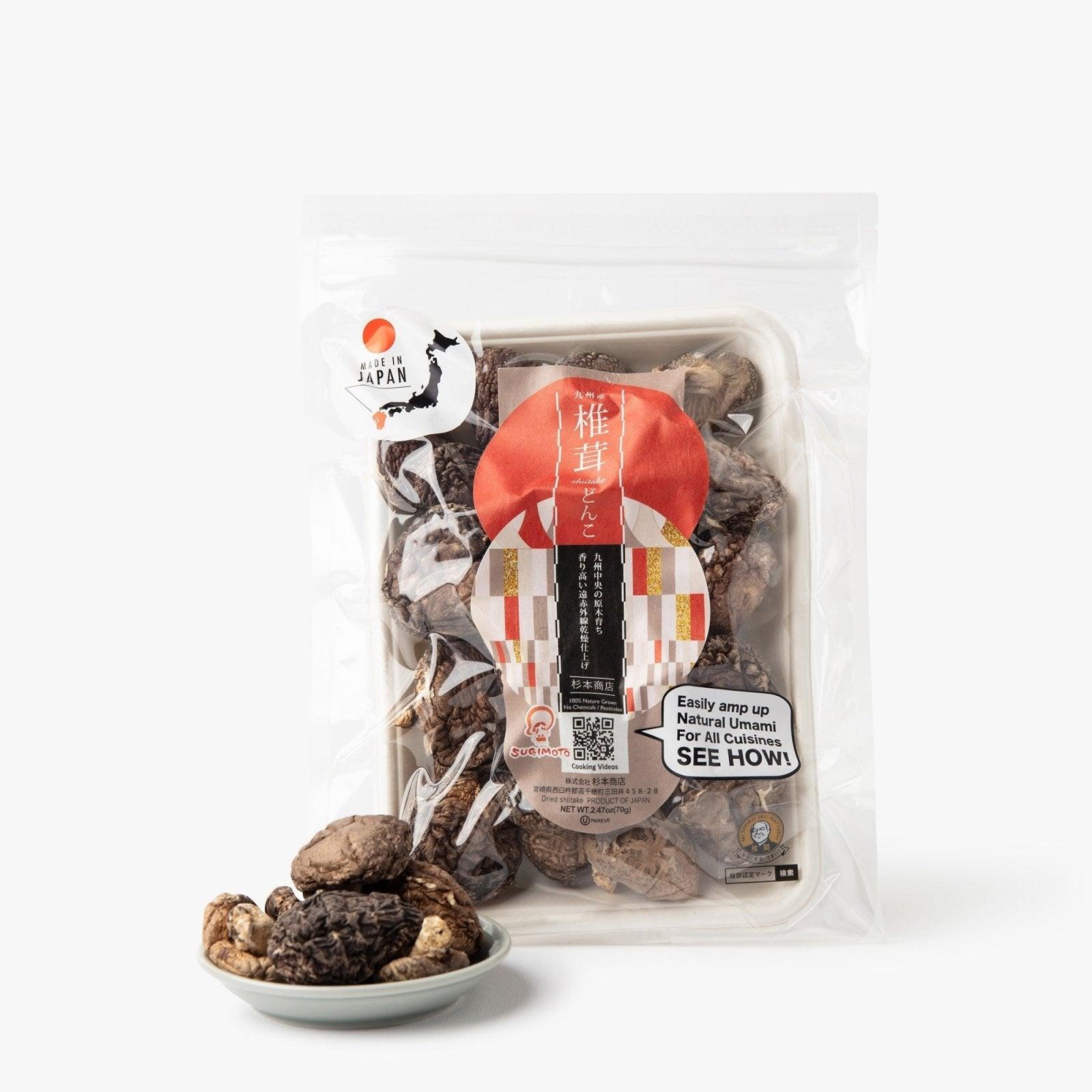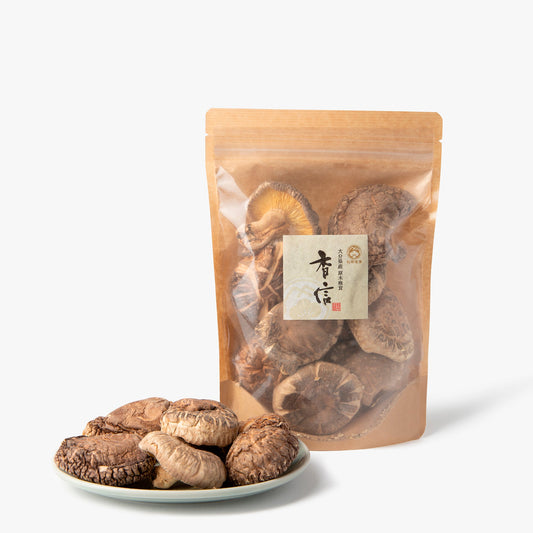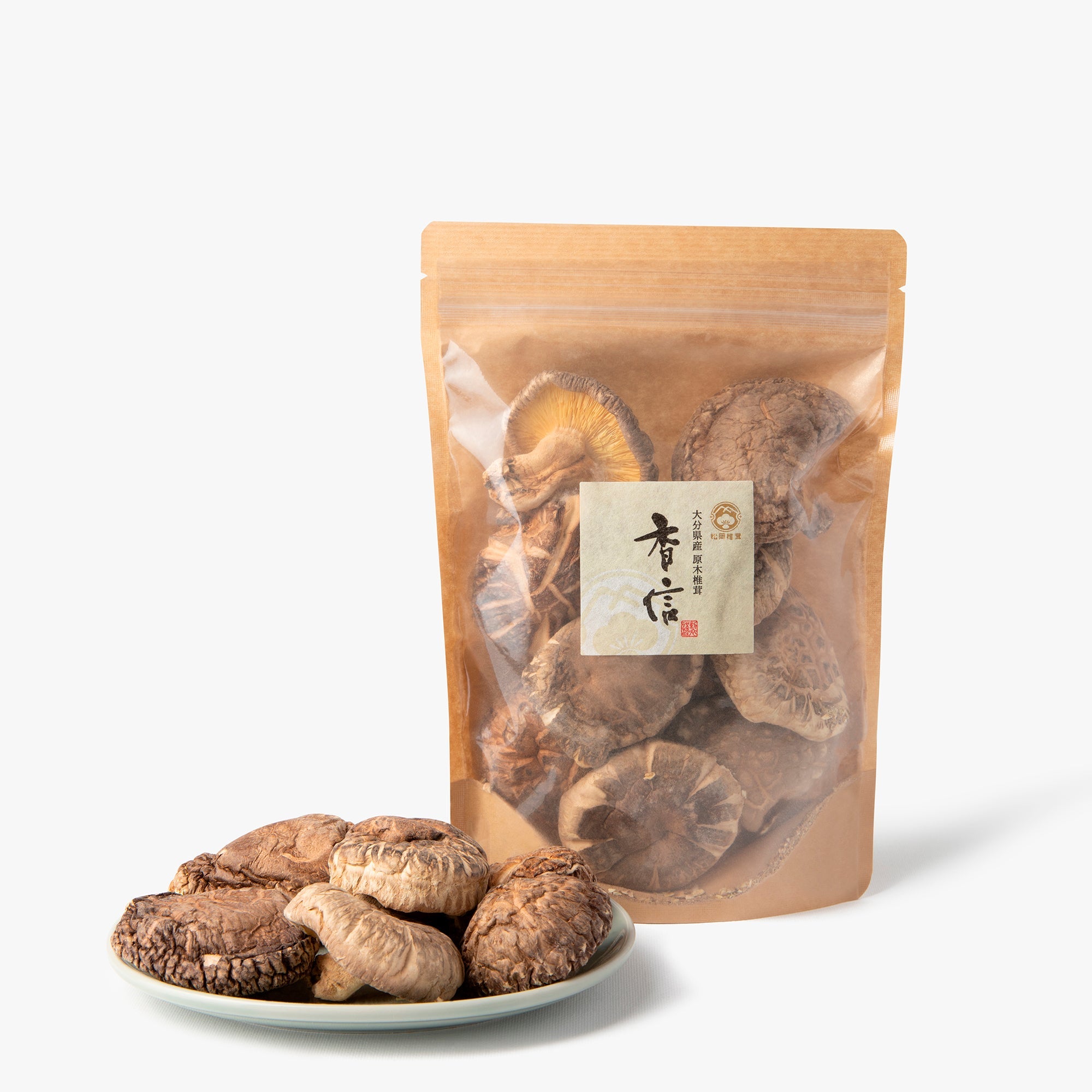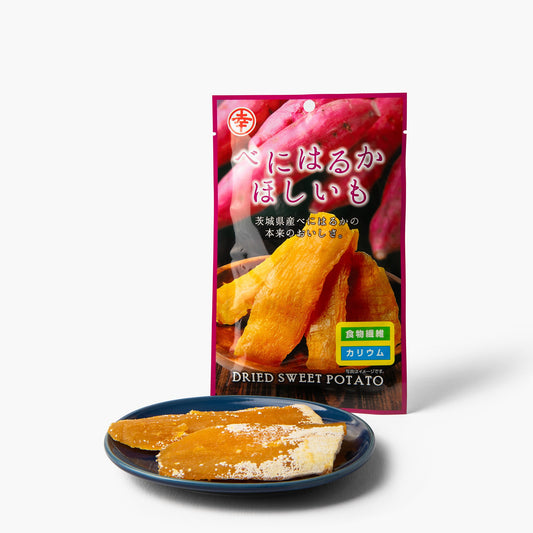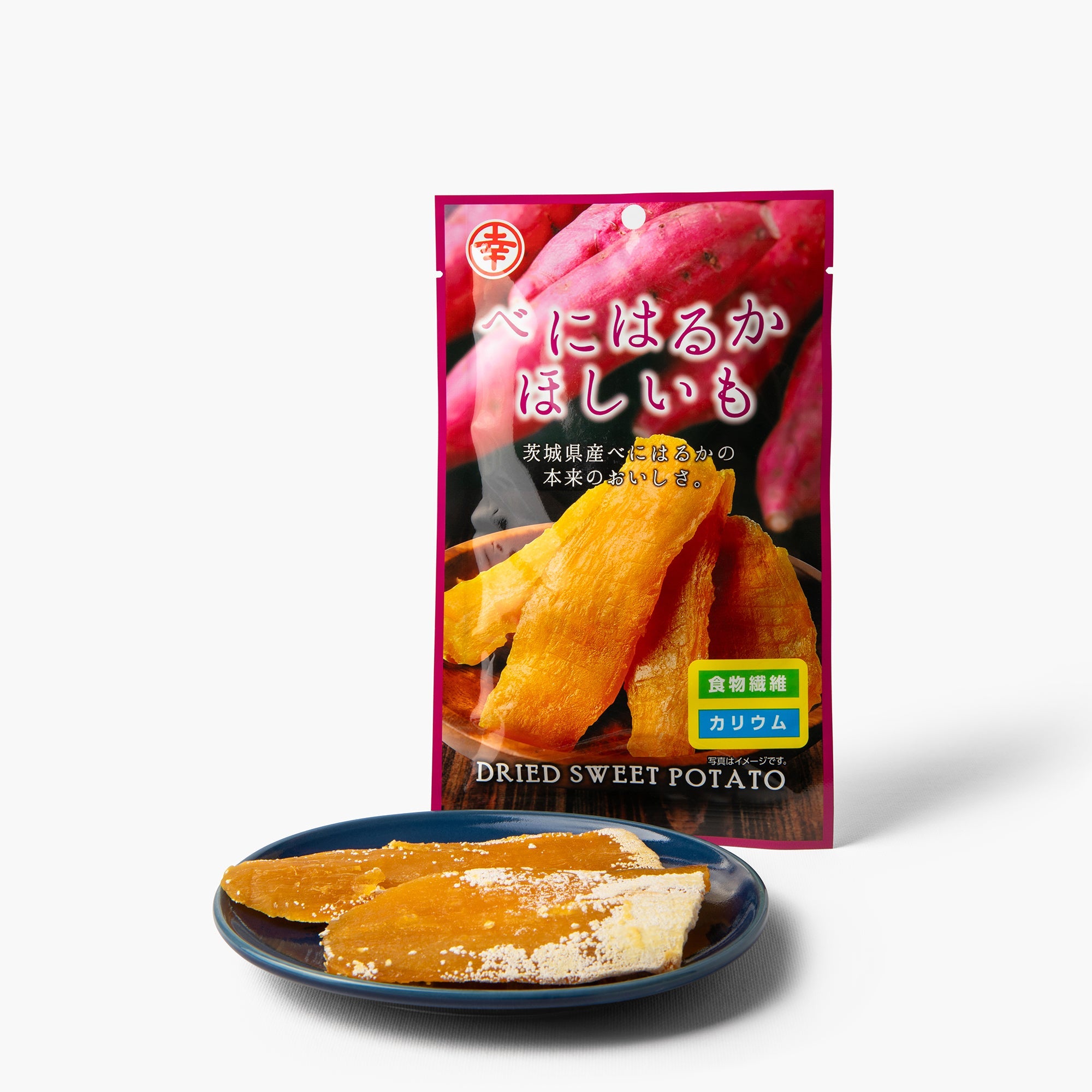Find out more about Japanese dried vegetables
What dried vegetables are popular in Japan?
Popular Japanese dried vegetables include :
- Shiitake: Dehydrated shiitake mushrooms are used in many Japanese dishes, including soups and broths, adding a rich umami flavor.
- Carrots: Dried and dehydrated, they are often used in dishes such as soups or salads.
- Celery: A dried vegetable frequently used in broths or to add crunch to dishes.
- Onion: Dried onion is used to enhance the flavor of a variety of dishes, including soups and vegetable dishes.
- Beet: Dried and often used in salads or vegetarian dishes, it retains its red color and mild flavor.
- Tomatoes: Dried tomatoes provide concentrated flavor and are used in sauces, soups and ready meals.
- Vegetable flakes: Blend of dehydrated vegetables for easy use in broths or instant dishes.
- Spicy vegetables: Some dried vegetables are spicy, like chili pepper, adding a spicy touch to Japanese recipes.
How are dried vegetables prepared and stored in Japan?
Dried vegetables in Japan are prepared and preserved through a rigorous process, using traditional methods to guarantee their quality and flavor. Here are the main stages:
- Natural drying: Vegetables such as shiitake, carrots and celery are often naturally dehydrated in the sun or air. This process preserves nutrients while concentrating flavors.
- Mechanical drying: Some varieties are machine-dried under controlled conditions, enabling faster drying while preserving quality.
- Using water: Once dried, vegetables can be rehydrated with water to return them to their original form, or used directly in soups or broths.
- Storage: Dried vegetables are stored in airtight containers to preserve their freshness. Some products are also stored in sachets with dehydration sachets to extend their shelf life.
- Packaging: To guarantee optimum preservation, dried vegetables are often vacuum-packed or packed in moisture-resistant sachets, ensuring long shelf-life without loss of flavor.
What are the health benefits of dried vegetables?
- Rich in nutrients: Dried vegetables such as shiitake, carrots and celery retain many of their vitamins and minerals, even after drying. They are an excellent source of fiber, vitamin A and potassium.
- Ease of digestion: The dehydration process concentrates nutrients, making them easier for the body to digest. They are also easier to incorporate into quick recipes, such as soups or broths.
- Antioxidant properties: Many dried vegetables contain natural antioxidants, which help fight free radicals and prevent cell aging.
- Improved digestion: their high fiber content helps regulate intestinal transit and maintain good digestion.
- Preserving natural flavors: Drying concentrates the natural flavors of vegetables, providing a rich, tasty, low-calorie diet.
- Convenience and storage: Dried vegetables are easy to store and use at any time, making them an excellent choice for quick, healthy meals.
How can Japanese dried vegetables be used in recipes?
Japanese dried vegetables are very versatile and can be used in a variety of recipes to add intense, natural flavors. Here are just a few ways to incorporate these vegetables into your dishes:
- Rehydration: Some dried vegetables, such as shiitake, carrots and tomatoes, need to be rehydrated in hot water for a few minutes before use. This restores their texture and intensifies their taste.
- Soups and broths: Dried vegetables are perfect for adding flavor to Japanese soups, such as miso soup or vegetable broths. They release concentrated flavors during cooking.
- Sauces and condiments: You can add dried vegetables such as onion or celery to your sauces to enrich the flavor. For example, add them to soy sauce or tsukemono mix.
- Salads: Once rehydrated, dried vegetables can be added to Japanese salads, adding texture and flavor.
- Accompaniments: Use dried vegetables in side dishes such as stir-fried vegetables or rice dishes.
- Toppings: Dried vegetables can also be used as toppings for sushi, onigiri or bento.











